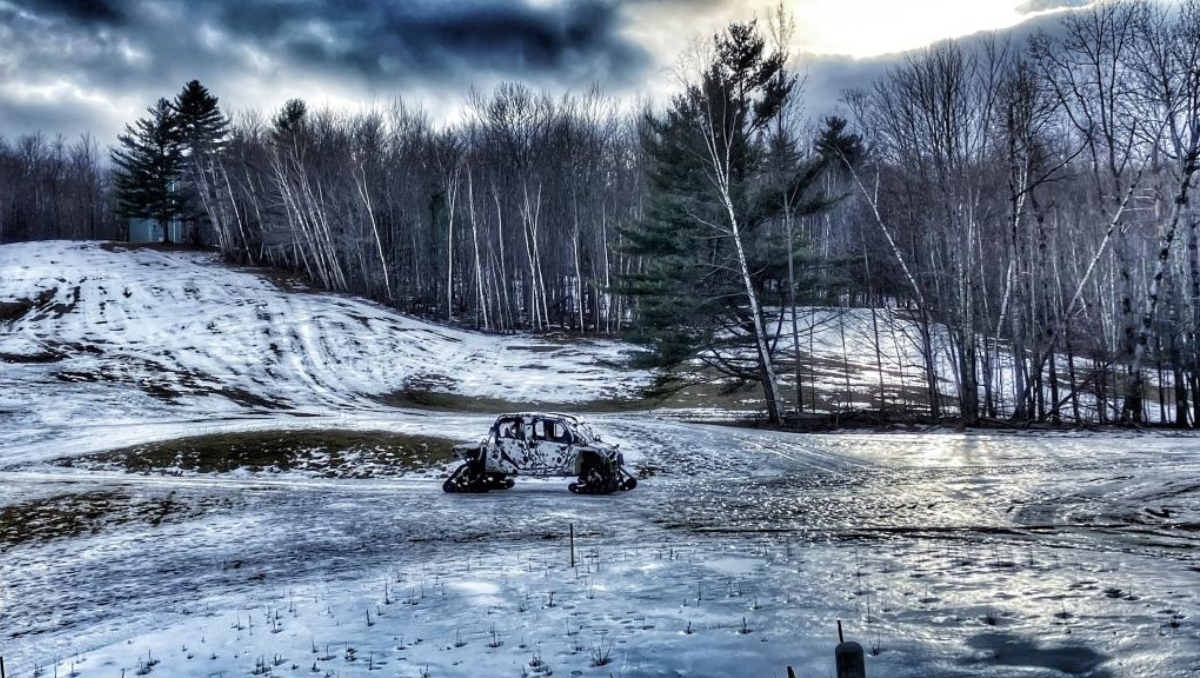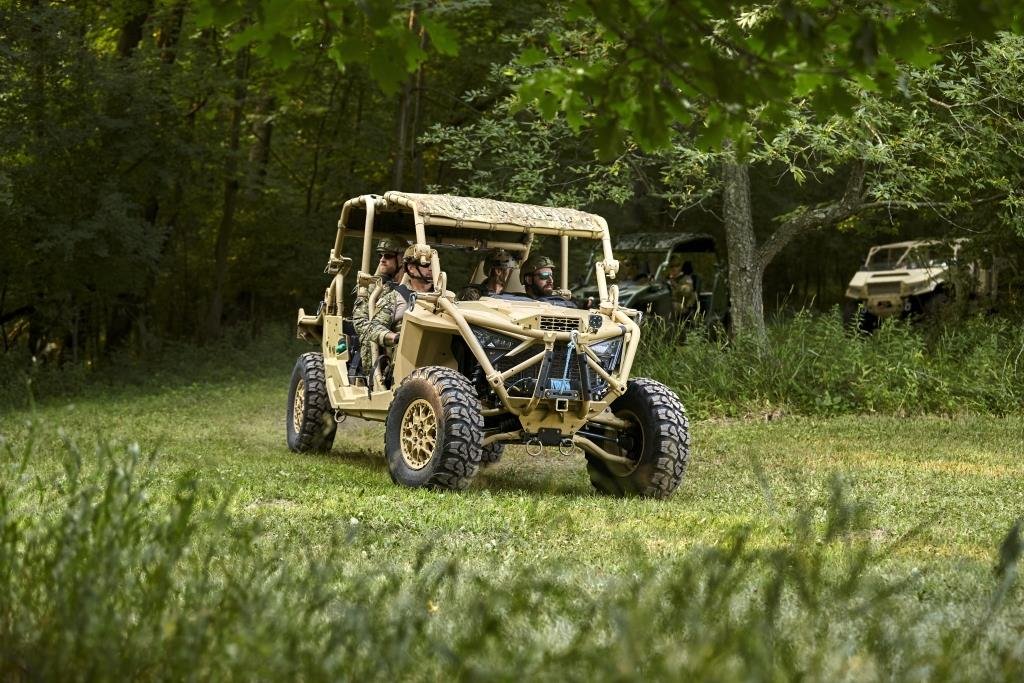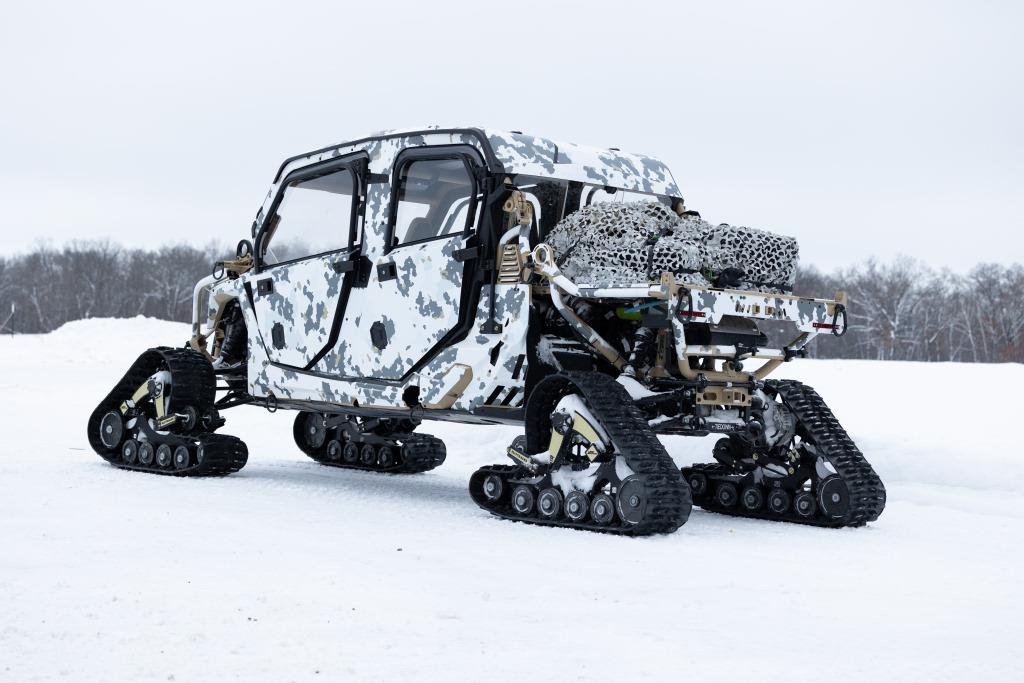TACTICAL MOBILITY PLATFORM - Polaris
BY MARC MONTGOMERY
Next Level Mobility
Tactical All-Terrain Vehicles from Polaris

While the report primarily discusses maritime issues, by extension it indicates a serious need for infrastructure, ground forces, and the vehicles for utility and rapid tactical movement of personnel for interdiction or other urgent situations.
Increased Arctic investment in turn means more personnel based in the Arctic and the means to move safely and quickly over difficult terrain and conditions.
LFE & DAME
Canada is currently studying new possibilities in transport for the changing needs of its formations related to new technology, environments and threats. Two such modernisation projects underway are the Light Forces Enhancement (LFE) and Domestic and Arctic Mobility Enhancement (DAME).
The LFE project seeks capabilities for Light Forces to deploy and operate in complex terrain and unique operating environments. The project will deliver equipment and systems unique to Light Force communications, transportation, insertion/extraction, and sustainment needs.
DAME seeks replacements for the venerable BV-206, a tracked articulated, all-terrain carrier vehicle developed by Hägglunds – now part of BAE Systems Platforms & Services – for the Swedish Army. According to the Government of Canada website, “This project will replace the current BV206 fleet with a new arctic mobility capability that may include a fleet of tracked, articulated and amphibious all-terrain carriers, as well as snowmobiles and ATVs.”
The new vehicle technology that Canada requires is already available and proven with some 50 militaries around the world, operating in various environments. As part of LFE, DND is seeking what is calls a Tactical Mobility Platform (TMP) – or ATVs – in various forms and sizes.
A rapid intervention ground force might no longer arrive packed into a couple of APCs or large trucks, travelling established routes, which are easily mined or targeted, but instead in a fleet of small, manoeuvrable TMPs. Where once more armour was thought to be the direction towards survivability, the attitude has shifted instead to greater mobility especially over rough terrain. Personnel arrive faster, and more alert while extraction is faster as well.
The U.S. military began exploration of ATV use about two decades ago. This led to a collaboration with Polaris Industries of Minnesota, a world leader in power sports vehicles since 1954. The firm set up a specialized division in 2005 called Polaris Government and Defense to develop vehicles specifically tailored to military requirements.
“The main objective for our vehicles, what we focus on, is off-road mobility,” said Jeff Luikart, Manager of Business Development and Foreign Military Sales at Polaris. “Survivability in our vehicles is the ability to drive off roads unpredictably, avoiding roads where there could be IEDs or mines,” he told CDR.
CANSOFCOM 
The Canadian Armed Forces (CAF), specifically Special Forces, are operating Polaris ultralight combat vehicles – the Polaris DAGOR – capable of carrying up to 9 persons with full kit, or 4,000 lb/1814Kg of cargo.
Public Works and Procurement Canada (PSPC) awarded its Ultra-Light Combat Vehicle (ULCV) contract to Polaris in 2016. The $15.5M USD contract includes DAGOR vehicles, maintenance and operator training, spare parts, and the option for additional vehicles to meet the requirements of Canadian Special Operations Forces Command (CANSOFCOM). CANSOFCOM accepted delivery of the first DAGOR in 2018.
Canada's three light infantry battalions are also equipped with other Polaris vehicles: the 2 and 4 person MRZR D (diesel variant) with additional trailers, and the single seat MV-850. These are based on civilian models, but with substantial structural upgrades and modifications for military use. All Polaris TMPs are air-transportable by Chinooks and are tested for Low-Velocity Air-Drop (LVAD).
THE ALPHA
An even more recent development is the 2 and 4 seat Alpha. The Alpha design is based on Polaris commercial vehicle products and meets user needs identified through years of military customer interaction. It fits an expanded set of mission roles by providing next generation ultralight capability and is proving itself in service with United States Special Operations Command (USSOCOM) and the United States Marine Corps (USMC) in austere environments with light infantry and special ops.
While the MRZR D has demonstrated its ruggedness and reliability, field durability testing has shown the Alpha has doubled the record on reliability. Instead of the CVT drive, Alpha has a robust automotive-grade driveline from its 118 hp turbo diesel engine (200% increase over MRZR D) with D1, D2 F24, and JP-8 fuel capability, to the 8-speed transmission and selectable 2 and 4WD differentials. It also has greater load capacity of 2,000 lb/907kg, towing capability of 2.500lb/1,133kg and provides increased ground clearance with 12-in/30.4cm at GVW (Gross Vehicle Weight).
According to Luikart the engine is also "whisper quiet", an important benefit when trying to achieve stealth during movement. "The Alpha is absolutely an amazing vehicle. I probably have over 1,500 miles driving it in offroad conditions, and it can go places where I've never seen another vehicle go," he told CDR.
The rear occupants of the Alpha-4 sit slightly higher providing them better forward vision and situational awareness.Ease of fast ingress and egress is also a survivability design consideration as is the modular concept. This allows easy configuration for different needs with the cargo area as a flatbed, or with side rails and tailgate, with rear seats removed and extended cargo bed added, or transformed into a two-litter CASEVAC mode.
Polaris is also developing an increased exportable power capability for the Alpha to support the growing number of systems and payloads drawing more power from the vehicle including command and control systems and other user systems.has also developed a Command-and-Control variant which should meet requirements of the LFE and DAME projects. Tactically, the ALPHA can carry quite a sting with available mounts for the 7.62 GPMG (General Purpose Machine Gun) in a top pintle and both A and B-pillars.
The Alpha can be easily slung beneath a helicopter, while two fully loaded Alphas will fit in a CH-147 Chinook for fast delivery, all made secure by the US MIL-STD 209 lifting and securing transport specs.
ARCTIC ALPHA 
To increase versatility, an Arctic version was created with tracks replacing the four wheels which the company says can be accomplished by two people in a couple of hours.
The tracks and cab enclosure features can be mixed and matched for mobility over snow and tundra, soft soil, and mixed environments. An Arctic camouflage wrap is available and a full cabin enclosure provides warmth and also protects against wind, dust, rain, and branches in other environments. The Alpha has engine start capability at -31°C.
From snow, to forest, to desert, having a single vehicle type easily converted to vastly different environments reduces logistics and maintenance issues, and overall cost.
While all parts are NSN listed, in a pinch, many can be readily obtained through Polaris' global dealer network. In addition to maintenance and operation training programs, “The Alpha has a dedicated production line, and the tested and proven model is readily available for procurement,” Luikart told CDR. Choosing a highly capable, proven platform could expedite the procurement process for Light Forces significantly.
Marc Montgomery is a Regular CDR Contributor

